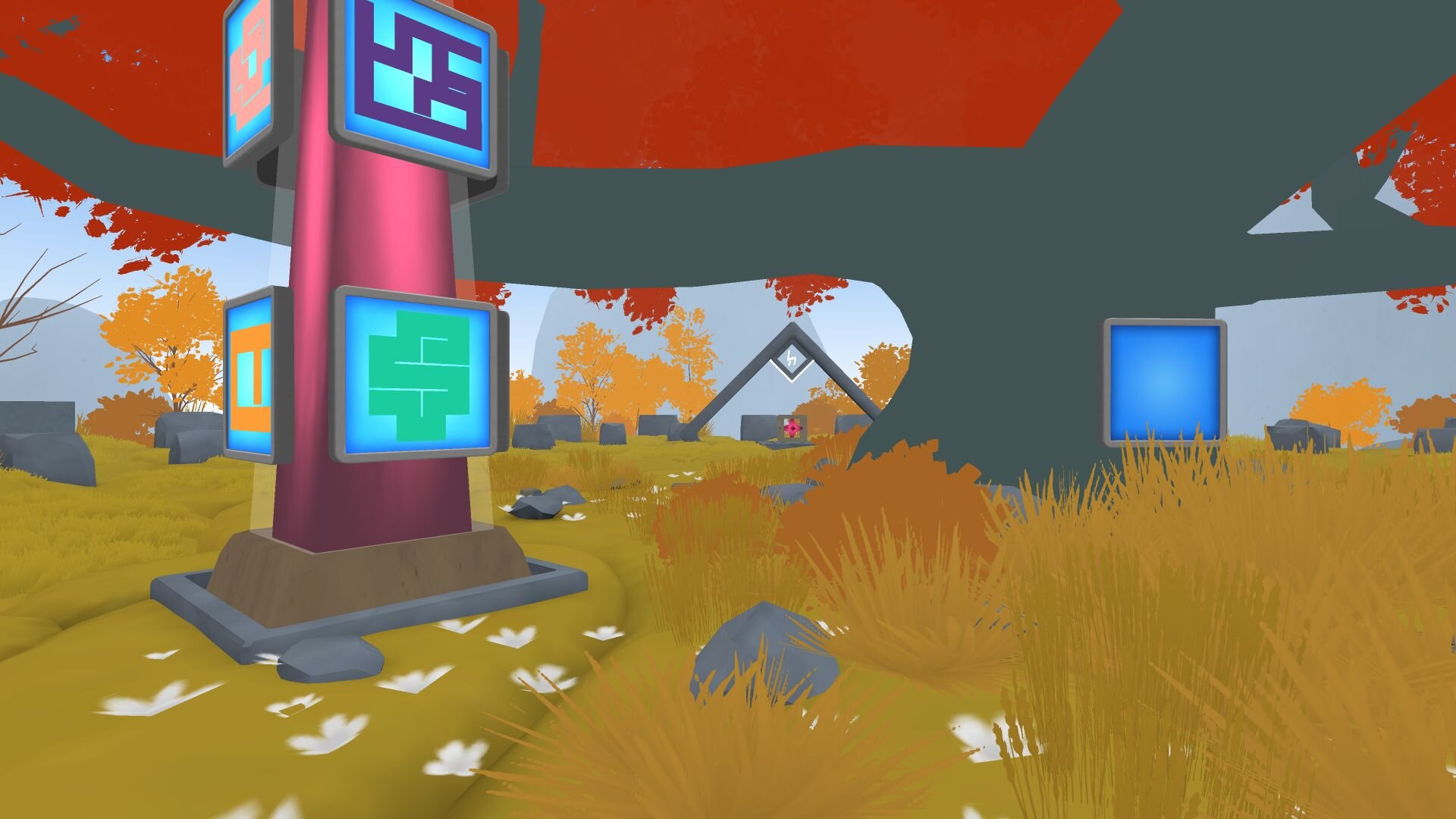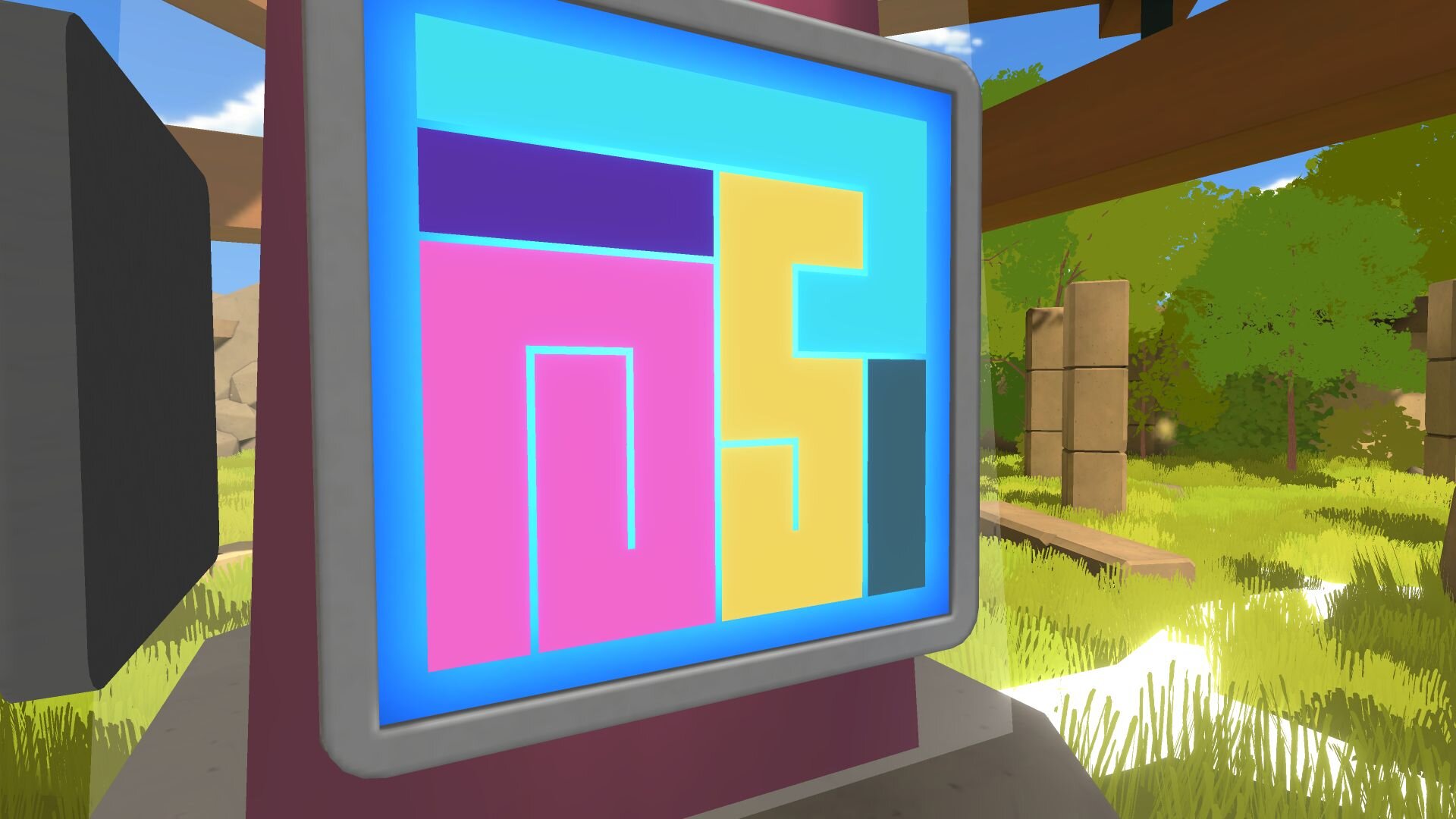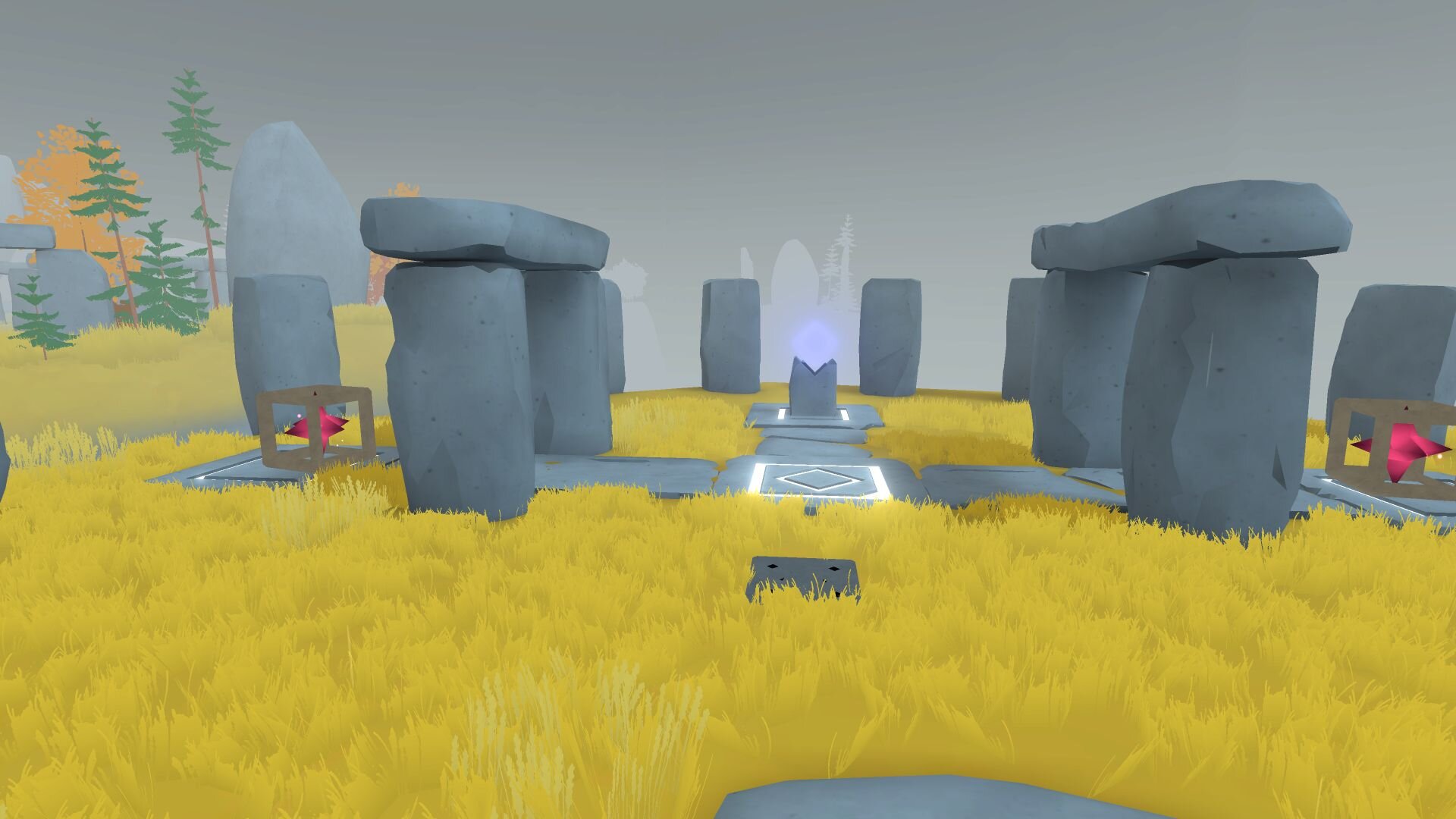Witness me.
Inspiration can often be a tough nut to crack. If you borrow or mimic your inspiration too closely, then you fall victim to expectations and comparisons, even if they can sometimes be a bit unfair. When I first glanced at The Pillar: Puzzle Escape, I couldn’t help but think of it as a more simplistic version of The Witness, and upon pushing through it to its easy 1000 gamerscore completion, that’s honestly the best way to summarize my time with it. While it certainly tries to mimic Jonathan Blow’s highly acclaimed 2016 puzzler, it fails to be even remotely in the same league, offering a collection of very samey puzzles in a world that is sadly not that interesting.
Right from the onset, you’ll see the inspirations from The Witness everywhere you go. It has a very similar colorful art style, albeit far more basic due to the title starting its life out as a mobile game. It also relies on a series of variations of grid-based puzzles, some of which dominate the game far too much, making for no significant challenge until they start wanting you to memorize far lengthier patterns to create an almost artificial increase in difficulty. Now, I could sit here all day and compare nearly every aspect of the game to The Witness, but I’m going to shoulder that for the moment and talk solely about what The Pillar offers and where it sits on its own. There is nothing fundamentally disastrous about the title, it just doesn’t do anything remarkably well or memorable.
Almost mysteriously, you’re placed into this bright and colorful world, locations that are more or less giant floating rocks littered with trees, paths, and small structures. It’s here where you’ll start solving a few simple introductory puzzles that allow you to get an understanding of how its mechanics work. As you approach a puzzle, you’ll be pulled in and use a cursor to select points on a grid. This is how you’ll solve nearly every puzzle you’re confronted with. I’ll also note that being automatically pulled into puzzles can be a bit annoying, especially later on when some areas have some objects very close to one another. These puzzles are usually attached to pillars that when completed, will rise up and reveal another set of four. Some puzzles will be on walls or unlocked as you complete more, but more or less, they are attached to these pillars.
Each of the 8 locations you’ll visit varies in size and purpose, pushing you through gates or over bridges that you’ll solve puzzles to progress through. Occasionally, and I mean that in its more purest definition, you’ll encounter more in-depth mechanics that highlight some areas of real creativity, such as using portals to alter destinations, or my personal favorite, using red, blue, and yellow pillars to create purple, orange, and lime green lasers, connecting that laser to their colored-counterpart switches. Sadly, for how fun and inventive this puzzle was, it’s only used a single time. For all the bland and generic ways most of the puzzles are designed, there is some rather smart work here, but it’s as you approach the later levels of the game.
The bulk of the puzzles that The Pillar offers are variations on moving colors around on a grid. You’ll find a path from color to color, ensuring that you fill up every space on the grid, but each color cannot move through one another. This causes you to scan the puzzle and look for how its pathing is designed, but most of them can be solved far too easily by creating borders around most of the puzzle and then just filling in the gaps. There are those that flash a moving path that you’ll need to follow, getting more in-depth as the game goes on. The remaining puzzles are moving a cursor along a path that can’t reach a dead-end, guiding a single color along a path to its goal, or moving a series of colors around to match them with their familiar. That last one is the one you’ll complete the least as it doesn’t appear until the second to last location if memory serves. Apart from some patterns that increase in number, there really isn’t any massive spike in difficulty, but oddly enough, the opposite. Some of the puzzles in the last few sections feel easier than some of the introductory ones, making it rather odd when you have a few solitary puzzles blocking progress that are dramatically simple. You’ll also encounter a few switches that feel more like trial and error than an actual puzzle, but they are only used a few times.
The last few remaining puzzles are those you’ll need to pay attention to the environment for. Whether it is looking for clues on how on what buttons to push on a grid, to looking for numbers that can be entered into a padlock, one of the few puzzles that are different each time you retry the level. But, it’s not until you reach the final three locations where the game starts to shake things up, offering far more unique puzzles and challenges that are more about the environment than the color grid puzzles you’ve been doing for the past hour and change. Though, those are still here in the dozens as well. Honestly, if someone told me that someone else made these last three stages, I’d totally believe you. However, since the game is made by just three people, that likely isn’t the case. The level titled “Stonehenge” is where the game starts to get very interesting, giving you more mechanics and ideas that genuinely make for a good experience. They still pale in comparison to what The Witness can do at its most basic, but here, it still makes for an enjoyable hour or so until the game ends.
While the game doesn’t have a story or any sort of narrative through-line, The PIllar still tries to make its pillars and various crystals appear mysterious and part of something larger. There are no notes or lore to dive into, or any other characters to provide any context to its world. Because the game doesn’t attempt to deepen its surroundings, it does lessen the impact these stages could have had. You’ll collect some tiled pieces of a puzzle in each of the locations, but they don’t really do anything for its gameplay or anything other than earning you some easy achievements. Had these collectibles been used to grant you insight into the world, then it could have made me more interested in my surroundings. In between each stage, you have some glimpses at something that could be conveyed as some sort of story but is far too cryptic for its own good. Overall, it just makes me feel detached from what could have been an interesting world but lacks anything that makes me want to explore or dive into more about what it offers.
Again, it’s not that the experience is dramatically poor, it’s just that the game can feel like you’re completing many of the same puzzles over and over again in a world that is largely bland and uninspiring. The musical score that plays alongside you is ok but largely feels like the developer snagged some royalty-free instrumental tracks and randomly set them to each level. Despite all my criticisms, there are some solid ideas here in the last three levels; puzzles, and concepts that if fleshed out more in a sequel could honestly make for a very entertaining game. Puzzles that feed off of the environment make your locations feel purposeful in their design and not just a location that has grid-based puzzles just strewn about. My time with The Pillar: Puzzle Escape to a full 1000/1000 gamerscore was just over 2 hours, making for a very quick and somewhat enjoyable gaming session. There is a decent future here if the developer, Paper Bunker, attempts a follow-up, but it needs a bigger focus on its world, the variety in its puzzles, and a bigger purpose for exploration.
Developer - Paper Bunker. Publisher - Paper Bunker, EastAsiaSoft. Released - January 13th, 2021. Available On - Xbox One, Series X/S, PS4, PS5, Nintendo Switch, PC, MacOS, Android. Rated - (E) - No descriptors. Platform Reviewed - Xbox Series X. Review Access - A review code was provided by the publisher for the purpose of this review.











